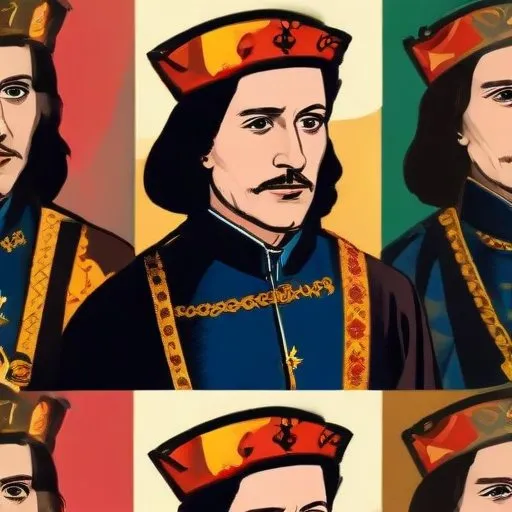
The King of Castile and ruler of Burgundy, known for his lavish spending and cultural achievements, including the construction of the Palace of Coudenberg in Brussels.
Philip I of Castile, also known as Philip the Handsome, was a ruler of the Burgundian Netherlands and titular Duke of Burgundy from 1482 to 1506, as well as the first Habsburg King of Castile in 1506. He is best known for being the first Habsburg monarch in Spain, paving the way for a dynasty that would shape the country's fate for centuries to come.
Born on July 22, 1478, Philip was the son of Maximilian of Austria, later Holy Roman Emperor, and Mary of Burgundy. Tragedy struck when Philip was just four years old, as his mother died in a riding accident, leaving him to inherit the Burgundian Netherlands.
Despite his young age, Philip proved to be an effective and beloved ruler, pursuing policies that favored peace and economic development in the Low Countries. He maintained a steady course of government, building a strong foundation for his territories.
In 1496, Philip's father arranged for him to marry Joanna, the second daughter of Queen Isabella I of Castile and King Ferdinand II of Aragon. This union would eventually lead to Philip becoming the King of Castile, uniting the crowns of Castile and Aragon under a single ruler.
Philip's time in Spain was marked by conflicts with his wife and her father, as he sought to consolidate his power and assert his authority. Despite these challenges, Joanna became queen of Castile in 1504, with Philip being proclaimed king in 1506.
Tragically, Philip's reign was cut short when he died in 1506, leaving his wife devastated by grief. His father-in-law, Ferdinand II of Aragon, and his own son, Charles V, Holy Roman Emperor, were quick to seize power, confining Joanna for the rest of her life on account of her alleged insanity.
Philip's legacy extends far beyond his short reign, as every Spanish monarch since his son Charles V has been a descendant of his. His unification of Castile and Aragon paved the way for a powerful Spanish empire, shaping the course of European history.
Though Philip's own quotes and sayings have been lost to time, his legacy speaks volumes about his commitment to peace, prosperity, and the unification of Spain.
Philip's life and reign serve as a testament to the complex web of alliances, marriages, and conflicts that shaped the course of European history. His unification of Castile and Aragon set the stage for a powerful Spanish empire, influencing the trajectory of European politics and culture for centuries to come.
Philip's reign is often compared to that of his contemporaries, such as King Ferdinand II of Aragon and Emperor Maximilian I. While each ruler had their own unique strengths and weaknesses, Philip's commitment to peace and prosperity set him apart as a visionary leader.
Philip I of Castile may have reigned for only a brief time, but his impact on Spanish and European history will be felt for generations to come.

Born in 1451
Unified the Spanish kingdoms, sponsored Christopher Columbus's voyage to the Americas, and established the Spanish Inquisition.
Born in 1380
Unified the Crown of Aragon, ruling over a vast territory in eastern Spain, and sponsored the voyages of Christopher Columbus, leading to the discovery of the New World.